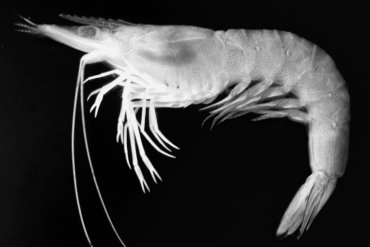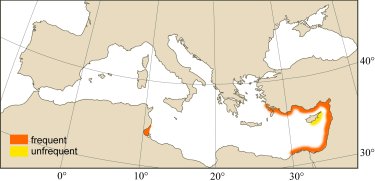
|
Relevant Synonyms
Misidentification
|
|
| photo : Bella Galil |
|
SHORT
DESCRIPTION
color :
body pale grey with dark brown pin-point chromatophores. Margins of rostrum, rostral crests, antennal scales, lateral margins of carapace, posterior margins of abdominal segments, setae on swimmeret gold. Dorsal crests of last three abdominal segments reddish-brown. Antennal flagella, lateral margins of uropods orange-red.
common size :
TL 15 cm in males, 20 cm females. |
DISTINGUISHING CHARACTERISTICS
BIOLOGY / ECOLOGY
habitat : |
|
1st
MEDITERRANEAN RECORD
|

|
|
DISTRIBUTION
|
ESTABLISHMENT SUCCESS
speculated reasons for success :
|
|
|
MODE OF
INTRODUCTION |
IMPORTANCE TO
HUMANS |
|
KEY
REFERENCES
|
|
|
 Penaeopsis monoceros Balss, 1927
Penaeopsis monoceros Balss, 1927